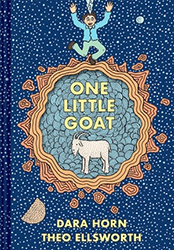By
– June 15, 2012
Dinah is a bored Jewish girl living in the repressed city of Utopia in the imagined America of 2020. She voices her boredom to her computer and is sent on a life-changing journey to 1943, where she joins her distant cousin Gonda and two friends in Theresienstadt. Though their survival depends on compliance with the Nazis, the teenagers secretly rebel against the guards by finding puppets that had been confiscated. They plan to use the puppets to reveal the truth to Red Cross inspectors, but when they are discovered the two boys are sent away, presumably to Auschwitz. Dinah and Gonda remain in Thereisenstadt until the end of the war when they are rescued. The book ends with Gonda returning to family in Prague, while Dinah returns to the future. As she “flies” home, Dinah recounts the lessons she was taught: “I had been given the chance to grow up, even though at great cost…I had discovered the nature of love, of death and how to make something out of nothing. I finally realized I had learned that only freedom and kindness mattered…”. Despite a few typos, a somewhat disconnected story line, and drawings that look hurried and unfinished, this graphic novel offers a unique way for teen readers to explore the Holocaust. The story line is similar to Jane Yolen’s The Devil’s Arithmetic, in which a modern-day protagonist is propelled back in time to experience the Holocaust. Older teens who are interested in graphic novels should be directed to the masterful Maus volumes by Art Spiegelman. Ages 13 – 17.
Wendy Wasman is the librarian & archivist at the Cleveland Museum of Natural History in Cleveland, Ohio.




